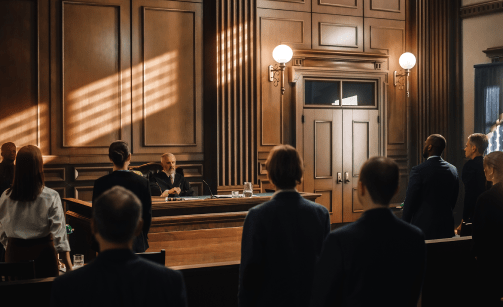Property Boundary Line Laws in Georgia
Most neighbors get along well but sometimes disputes arise over boundary lines when plants are planted or a fence is built along a boundary line. You want to be a good neighbor but you also want to protect your rights so it’s important to understand laws concerning property boundaries.
Stewart, Melvin & Frost partner and attorney Rustin Smith is with us this morning to property boundary laws and issues that can arise.
Q&A
Question: Why is it important to understand property boundary line laws?
Rustin: Property boundaries are very important when it comes to the use of land, and even a small encroachment by your neighbor onto your land may result in consequences that you cannot foresee.
For instance, if your neighbor builds a fence or a new driveway that comes onto your property by a few inches, this may be enough for a title company to refuse to issue insurance when it comes time to sell your house. Also, many states have laws that allow a person who uses another’s land for a long enough time period to actually gain a legal right to continue to use the land, and in some cases, even gain ownership of that land.
Question: So you could lose a portion of your land?
Rustin: Yes. It’s called adverse possession. There is a tendency to presume that a fence or wall located near a boundary was intended to mark the line, and a landowner who builds his fence near the line but inside it, runs a practical risk of losing the portion of his land thus fenced out, by adverse possession. By statute in Georgia, acquiescence for seven years, by acts or declarations of adjoining landowners, is sufficient to establish a dividing line. Thus, an oral agreement accompanied by seven years actual possession may suffice. Actual possession is not necessary where acquiescence is shown by declarations of the parties acknowledging the line.
Question: What is the law covering trees and plants planted on or near a property boundary line?
Rustin: Ownership of a tree is determined by the location of its trunk even if the branches encroach into your neighbor’s land. If the trunk of a fruit tree is on your property, you have the right to enter your neighbor’s property to gather the fruit. Also, your neighbor has the right to trim branches that hang into their property. If a tree is directly on the boundary line then the tree is owned by both property owners.
Question: Sometimes you hear of spite fences that are built near boundary lines to block to views?
Rustin: A fence built not for any beneficial purpose but instead to annoy a neighbor is often called a spite fence. It doesn’t have to be a fence. It can be a row of tall bushes or trees. For example, a fence erected maliciously and with no other purpose than to shut out the light and air from a neighbor’s window is a nuisance. Generally, the law offers no protection against structures which obstruct the passage of light, air, and view on adjoining lands.
But if the fence is built solely from malice and invades on the right to light and air, a neighbor can seek relief through the courts. Remember that you will have the burden of proof to show a court that your neighbor installed the fence for malicious purposes.


